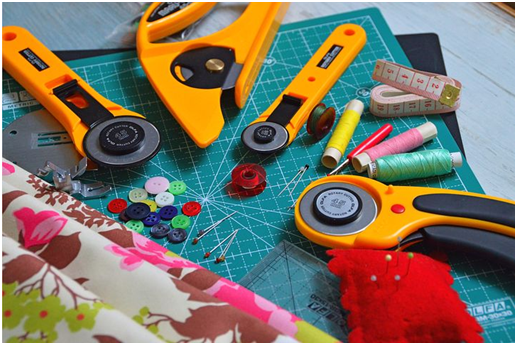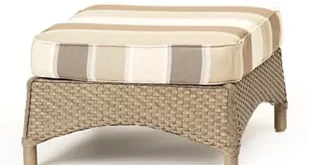Whether you’re an advanced quilter who can produce works of art to sell online, or a beginner who wants to decorate his/her home with beautiful handmade items, there are some quilting essentials you’ll be needing. Toolkit staples like thread, fabric, needles, marking tools and scissors pretty much go without saying, but by choosing some special quilting tools, you can facilitate the preparation process, secure yourself against possible injuries, and achieve precise results every time you get to work!

1. Rotary Cutter
One of the first tools you’ll want to own is a rotary cutter, in order to cut the patchwork shapes you like and quick-piece your quilts. There’s a huge variety of rotary cutters out there, in different designs, shapes and sizes, and it all comes down to which one feels the most comfortable in your hand. So before you type it in a search bar and buy online, you can go ahead and try out a few models at the nearest quilt shop.
2. Cutting Mat
You may currently be using your dining table for any creative activity, but it’s always a good idea to protect your working surface with a good cutting mat. Most models include lines or rulers to help you with your calculations, so you can use those as a guide along with a basic ruler you may already have at home. If you want to invest in a good cutting mat, consider the self-healing kind, which absorbs cuts better than the regular alternatives. To make your cutting mat last longer, you can clean it with some lukewarm water, white vinegar and dish soap, then simply let it air-dry.
Batting is the insulated filling you’ll use to pad your quilts, adding bulk and warmth to your layers. You can purchase your batting in many materials, thicknesses and shapes—cotton, wool, rolls, sheets, or even readily attached to fabric, for easier application. You should choose your batting options according to the nature of your current project. Cotton batting, for example, is breathable and lightweight, but it shrinks a lot and is harder to hand-sew; while polyester batting works best for decorative quilts as it drapes very well.
4. Sewing Machine
You can hand-sew your quilts during your first practices and preparations, but for real precision, practicality and time efficiency, you will want to use a sewing machine. You probably won’t need dozens of different decorative stitches, so a basic sewing machine should do. You can try a few of the reliable, well-known brands while searching for the right machine for you, and once you find it, you can always enhance it further with accessories like walking feet, stitch regulators, rufflers and various needles.
5. Seam Ripper
A seam ripper is what will come to your aid when you make mistakes, and it’s true that we all do that at one point or another. A seam ripper makes it easy to undo the stitches that don’t seem quite right, which could actually happen often enough to make you wish you had invested in a good tool! Of course, the design is basically the same for all seam rippers, but the ones on the cheaper side may not last long enough, and end up doing nothing but clutter your precious toolbox. If you want to go for the best of the best, you can choose the sturdy brass varieties; but if practicality is your main concern, any mid-range seam ripper with an ergonomic handle should get the job done.
6. Iron and Ironing Board
In most quilting tutorials, you will come across a “pressing” step. This involves smoothening your quilt with an iron to get rid of wrinkles and press down the pieces you’ve sewn together. You need to do some research and check out reviews to find a reliable iron for quilting. If you’re a beginner, you can try the household iron you might already have at hand, but a heavy one will definitely produce better results. The ideal iron presses the components of your work by using both heat and weight, so purchasing a heavy-duty, easy-to-use iron would be a good investment. As for the heat protection of your work surfaces, buying an ironing board designed specifically for quilting can help you while pressing fabrics and quilt tops, without the effort of pulling your quilts away from the narrow end traditionally present in standard ironing boards.
The Sky’s the Limit
In the end, arts and crafts are a great way to get your creative juices flowing. There are few absolute rules to quilting, really; you can follow the guidelines and instructions to get the basics right, but once your skills start to grow, you’ll have the freedom to make every new project your own. With a little help from these essential tools, and a variety of colors, patterns and decorations, you’ll master your craft in no time and create gorgeous items ranging from beddings, pillows and table runners to wall decorations, bags and clothes!
 World inside pictures Collect and share the best ideas that make our life easier
World inside pictures Collect and share the best ideas that make our life easier








